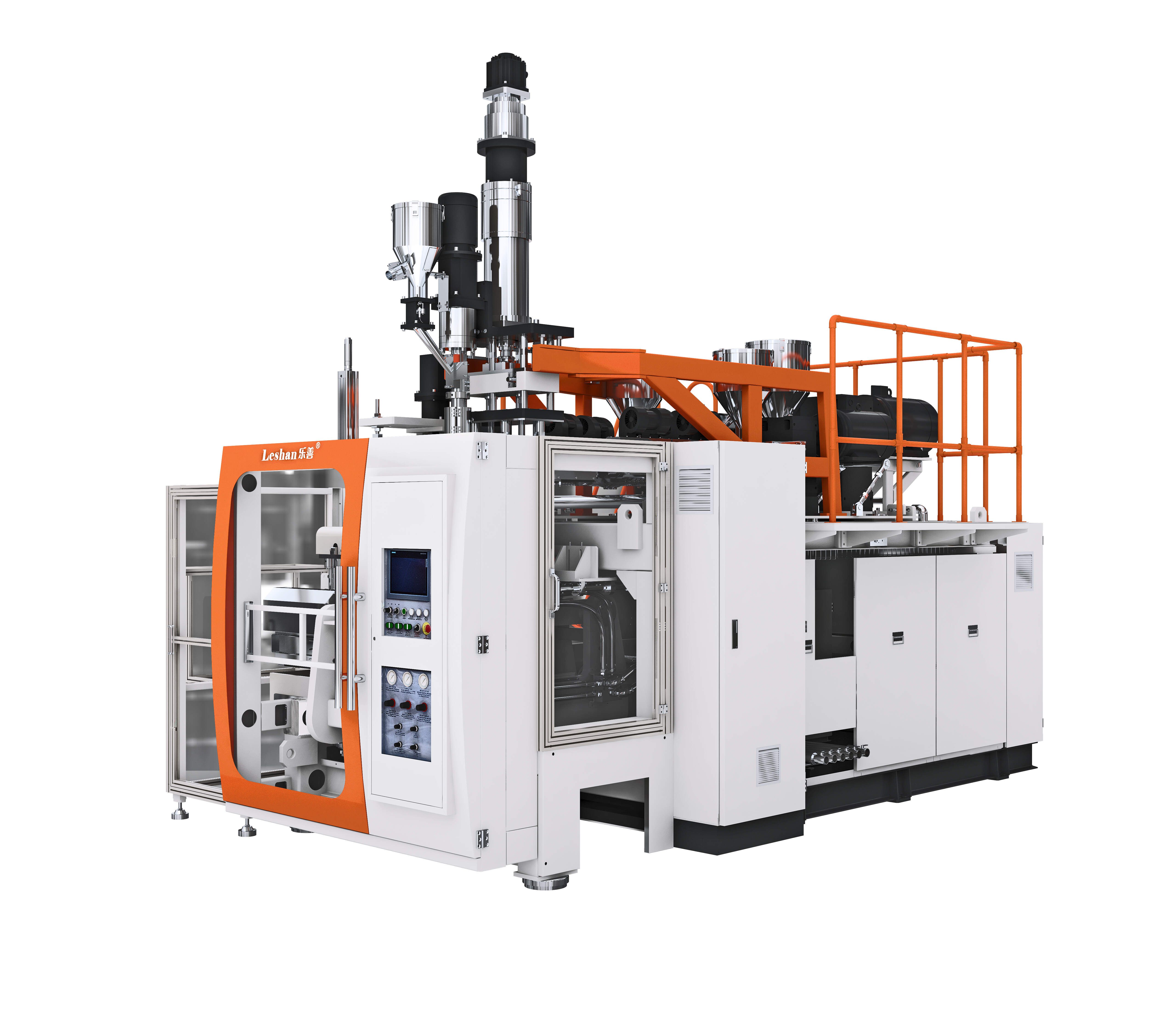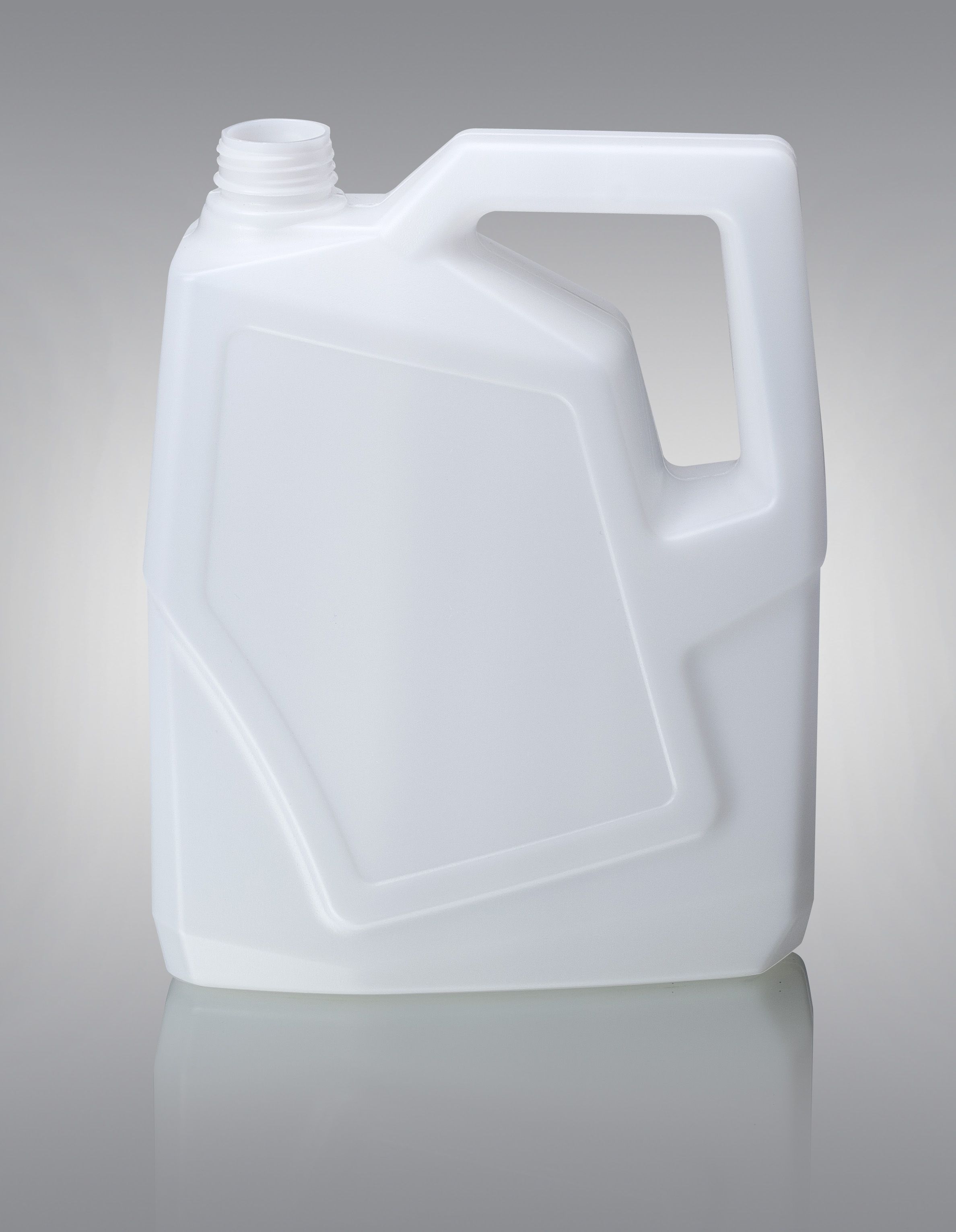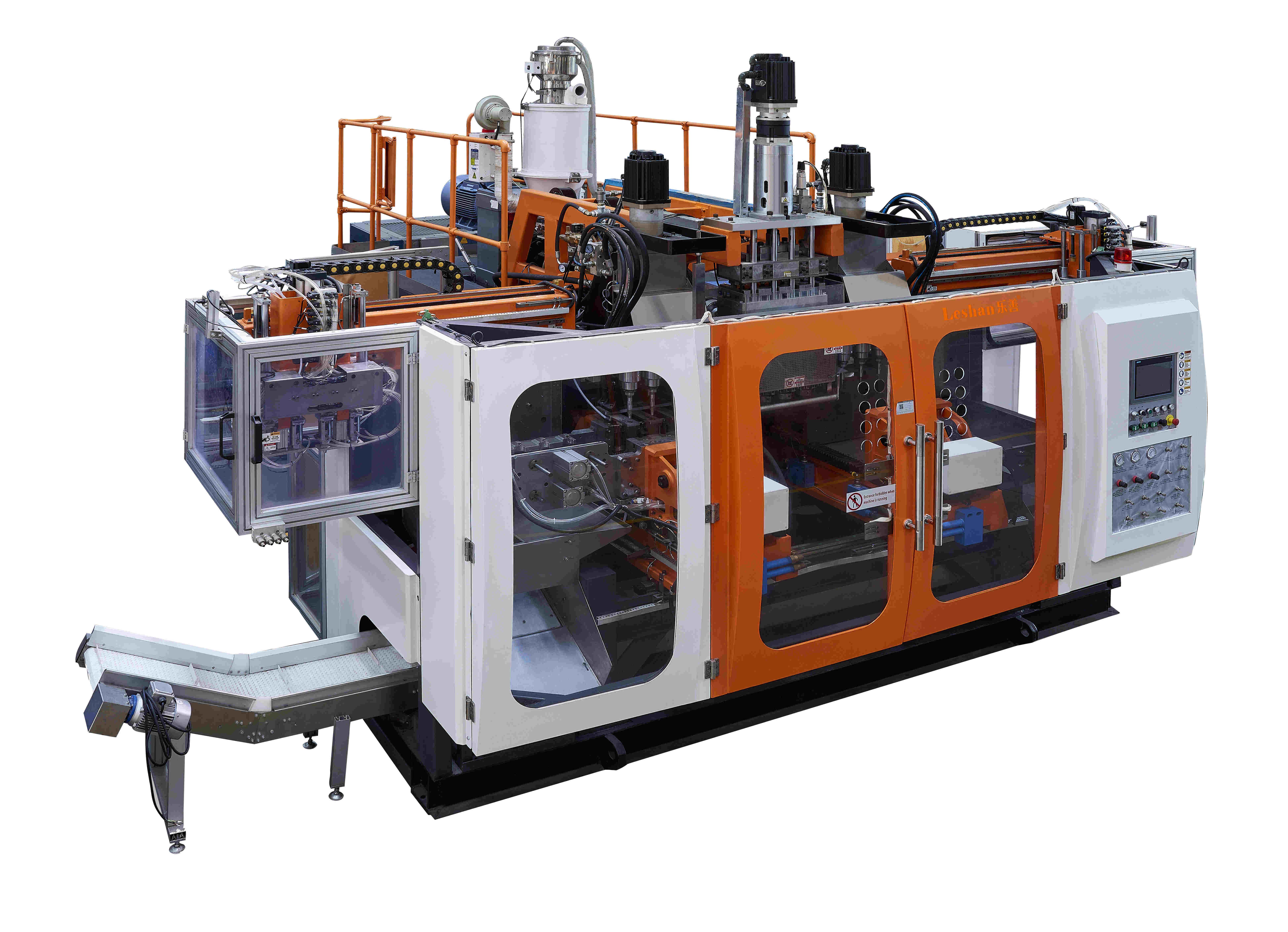
5 liter extrusion blow moulding machine
5 liter extrusion blow moulding machine
Guangdong Leshan Intelligent Equipment Corp.,Ltd is a professional enterprise that produces blow molding machines. Our factory is located in Foshan City, close to both Guangzhou and Shenzhen. We have an experienced team in technology research and development, manufacturing, sales, installation, and after-sales service. Our products mainly include Engine oil bottle blow molding machine,multi-layer coextrusion blow molding machine,Food bottle blow molding machine,Auxiliary machine,Cleaning bottle blow molding machine,PET Machine,Chemical barrel blow molding machine,athlon series hydraulic machine,Irregular shape product blow molding machine,Extrusion Die Head, etc.
Our company brought in the Germanic technical 3D scanner which is exclusive used for mold-designing . The advanced Leshan Blow Molding Machine working with the superior Leshan Mould makes the production speed faster and the production quality the topest.We use International standards and the ISO9001:2012 quality management system in producing.Our Hydraulic Blow Molding Machine is adopted by many listed companies, such as Wahaha,Walch,Bawang,Sinopec,Cnice,BlackCow Food,Yili,Kunlun,Liby, ect.
| Parameter | Information |
| Product Name | 5 liter extrusion blow moulding machine |
| Brand Name | Leshan |
| Place of Origin | Foshan,China |
| PLC Brand | Siemens |
| Core Components | Gearbox,Motor,Engine,PLC,Gear...etc |
| Warranty | 1year |
| Plastic Processed | Polystyrene,PP,PVC,PE,ABS,PC...etc |
| Application | Bottle |
| Port | ShunDe/GuangZhou/ShenZhen China |
| MOQ | 1 Set |
| Export Country | Russia, Australia, Poland,Poland,Bahrain,British Indian Ocean Territory,Bermuda...etc |
| Export region | Asia,Oceania,Africa... |
| Certification | ISO 9001,CE...etc |
| Automatic | Yes |
| Screw L/D Ratio | 24 |
| Packaging Details | Standard exporting machine packing with plastic film |
| Color | Customized |
| Accumulator Capacity(L) | 100 L |
| Service | Online support... |
| Supply Ability | 500 Set/Sets per Month |
| Lead time (days) | 70 (To be negotiated) |
Please note: The above table data is for reference only. For specific information, please contact us.

As a commonly used plastic processing machine, 5 liter extrusion blow moulding machine has the characteristics of powerful functions and easy operation. It can complete the heating, plasticizing, blowing, cooling and other processes of plastic in one mold feeding and molding process, thereby making the product lightweight, durable, transparent and other advantages.
At the same time, the blow molding machine also has high production efficiency, can continuously produce large quantities of products, and is suitable for manufacturing plastic containers of various specifications and shapes.

5 liter extrusion blow moulding machine---FAQs Guide
2.How does the extrusion blow molding process differ from injection blow molding, and what types of products are typically produced using each method?
3.What materials can be used to manufacture 5 liter extrusion blow moulding machine?
4.How to control the energy consumption of 5 liter extrusion blow moulding machine?
5.How long is the production cycle of Leshan blow molding machine? What is the lead time?
6.How to install the machine and use the 5 liter extrusion blow moulding machine?
7.Where is your factory located? How can I visit there?
8.Why does the temperature of the barrel exceed the set value when the extruder blow molding machine is working fully automatically?
9.What is the cost composition of 5 liter extrusion blow moulding machine?
10.How to solve the malfunction of the 5 liter extrusion blow moulding machine?
1.What waste materials will be generated during the production process of 5 liter extrusion blow moulding machine?
Our company has many years of 5 liter extrusion blow moulding machine experience and expertise.
1. Plastic waste: Blow molding machines use plastic materials such as polyethylene (PE), polypropylene (PP), and polyethylene terephthalate (PET) to produce plastic products. These materials are often left as waste after the production process.
2. Scrap plastic: During the production process, there may be excess or defective plastic parts that are not suitable for use. These scraps are considered waste and need to be properly disposed of.
3. Residual materials: Some materials, such as colorants and additives, may be left over after the production process. These materials may also be considered waste and need to be disposed of properly.
4. Packaging waste: Blow molding machines often require packaging materials such as cardboard boxes, plastic bags, and bubble wrap for shipping and storage. These materials can generate waste during the production process.
5. Cleaning waste: Blow molding machines need to be cleaned regularly to maintain their efficiency. This process can generate waste such as cleaning agents, rags, and other materials.
6. Energy waste: The production process of blow molding machines requires energy, which can result in waste in the form of emissions and by-products.
7. Water waste: Some blow molding machines use water for cooling or lubrication purposes. This water may become contaminated during the production process and need to be properly treated before disposal.
8. Metal waste: Some blow molding machines may use metal components, such as molds and machine parts, which can generate metal waste during the production process.
9. Hazardous waste: Some materials used in blow molding machines, such as solvents and chemicals, may be hazardous and require special handling and disposal methods.
10. Electronic waste: Blow molding machines may also contain electronic components that can become obsolete or damaged during the production process, resulting in electronic waste.
2.How does the extrusion blow molding process differ from injection blow molding, and what types of products are typically produced using each method?
We have been working hard to improve service quality and meet customer needs.
Extrusion blow molding and injection blow molding are two different processes used to manufacture plastic products. While both methods involve melting plastic and shaping it into a desired form, there are some key differences between the two.
Extrusion blow molding is a process in which a molten tube of plastic, called a parison, is extruded through a die and then inflated to form a hollow product. The parison is then cooled and the mold opens to release the finished product. This process is commonly used to produce bottles, containers, and other hollow objects.
On the other hand, injection blow molding involves injecting molten plastic into a mold cavity, where it is then cooled and solidified. The mold then opens to release the finished product. This process is commonly used to produce small, complex, and precise products such as medical devices, pharmaceutical packaging, and small bottles.
One of the main differences between the two processes is the way the plastic is shaped. In extrusion blow molding, the plastic is shaped by the inflation of the parison, while in injection blow molding, the plastic is shaped by the mold cavity.
Another difference is the type of molds used. In extrusion blow molding, the molds are typically made of two halves that come together to form the desired shape. In injection blow molding, the molds are usually made of a single piece that is opened and closed to release the product.
The type of plastic used also differs between the two processes. Extrusion blow molding is typically used for high-density polyethylene (HDPE) and polyethylene terephthalate (PET) plastics, while injection blow molding is commonly used for polypropylene (PP) and polyethylene (PE) plastics.
In terms of product applications, extrusion blow molding is commonly used for larger, more simple products such as bottles and containers, while injection blow molding is used for smaller, more complex products such as medical devices and pharmaceutical packaging.
In summary, extrusion blow molding and injection blow molding are two different processes used to manufacture plastic products. While both methods involve melting plastic and shaping it into a desired form, they differ in the way the plastic is shaped, the type of molds used, and the types of products produced.
3.What materials can be used to manufacture 5 liter extrusion blow moulding machine?
We should enjoy a good reputation in the industry, and we can increase the added value of the products of cooperative customers through technological innovation.
1. Steel: The main structural material used in blow molding machines is steel, which provides strength and durability to the machine.
2. Aluminum: Some parts of the machine, such as the extruder, may be made from aluminum due to its lightweight and corrosion-resistant properties.
3. Plastic: The molds used in blow molding machines are typically made from plastic, such as high-density polyethylene (HDPE) or polypropylene (PP).
4. Rubber: Rubber is used for seals and gaskets in the machine to prevent leakage and ensure airtightness.
5. Brass: Brass is used for valves and fittings in the machine due to its corrosion resistance and ability to withstand high temperatures.
6. Copper: Copper is used for electrical components and wiring in the machine due to its good conductivity.
7. Stainless steel: Some parts of the machine, such as the heating elements, may be made from stainless steel due to its resistance to corrosion and high temperatures.
8. Glass: Glass is used for the viewing window on the machine, allowing operators to monitor the production process.
9. Ceramic: Ceramic is used for heating elements and insulation in the machine due to its ability to withstand high temperatures.
10. Composites: Some parts of the machine, such as the control panel, may be made from composite materials, which offer a combination of strength, durability, and lightweight properties.
4.How to control the energy consumption of 5 liter extrusion blow moulding machine?
We are a professional 5 liter extrusion blow moulding machine company dedicated to providing high quality products and services.
1. Use energy-efficient machines: When purchasing blow molding machines, opt for models that are energy-efficient and have a high energy star rating. These machines are designed to consume less energy while still maintaining high production efficiency.
2. Regular maintenance: Regular maintenance of the machines is crucial in controlling energy consumption. This includes cleaning and lubricating the machines, checking for leaks, and replacing worn-out parts. A well-maintained machine will operate more efficiently and consume less energy.
3. Optimize production processes: Analyze the production processes and identify areas where energy consumption can be reduced. For example, reducing the amount of air pressure used in the blowing process can significantly reduce energy consumption.
4. Use energy-saving features: Many blow molding machines come with energy-saving features such as automatic shut-off, idle mode, and variable speed drives. These features can help reduce energy consumption when the machine is not in use or operating at a lower speed.
5. Monitor energy usage: Install energy meters to monitor the energy consumption of the machines. This will help identify areas where energy is being wasted and allow for adjustments to be made to reduce consumption.
6. Use energy-efficient materials: The type of material used in the blow molding process can also affect energy consumption. Opt for materials that require less energy to heat and mold, such as lightweight plastics.
7. Implement energy management systems: Consider implementing an energy management system that can track and analyze energy usage in real-time. This will help identify patterns and areas for improvement.
8. Train employees: Proper training of employees on the operation and maintenance of the machines can help reduce energy consumption. They should be aware of energy-saving practices and encouraged to follow them.
9. Turn off machines when not in use: Make it a practice to turn off the machines when they are not in use, such as during breaks or at the end of the day. This will help save energy and reduce unnecessary wear and tear on the machines.
10. Regularly review and update energy-saving strategies: Regularly review and update your energy-saving strategies to ensure they are still effective. As technology advances, new energy-saving techniques may become available, so it is essential to stay informed and make necessary changes.

5.How long is the production cycle of Leshan blow molding machine? What is the lead time?
Production cycle 40-45 days; Delivery time: 60 days.
6.How to install the machine and use the 5 liter extrusion blow moulding machine?
We can send engineer to your factory for worker training and machine installation.
7.Where is your factory located? How can I visit there?
Our factory is located in Shunde, Foshan City, Guangdong Province, China. All our clients, from home or abroad, are warmly welcome to visit us!
8.Why does the temperature of the barrel exceed the set value when the extruder blow molding machine is working fully automatically?
Extrusion requires accurate control of the temperature of each area. The heat comes from the heating element on the one hand, and the internal shear heat on the other. So, you want to check whether the fan is broken, or the screw does not adapt to the plastic you choose, need to change the plastic or need to change the screw.You can also ask questions on Leshan's website, and their technicians can respond to your questions.

9.What is the cost composition of 5 liter extrusion blow moulding machine?
We focus on providing high 5 liter extrusion blow moulding machine quality products and services.
The cost composition of blow molding machines can vary depending on the type and size of the machine, as well as the manufacturer and country of origin. However, the general cost composition can be broken down into the following components:
1. Machine base: This includes the main frame, base plate, and other structural components of the machine. It typically accounts for 20-30% of the total cost.
2. Extruder: The extruder is the heart of the blow molding machine and is responsible for melting and shaping the plastic material. It can account for 30-40% of the total cost.
3. Molds: Molds are used to shape the plastic material into the desired product. The cost of molds can vary greatly depending on the complexity and size of the product being produced. It can account for 20-30% of the total cost.
4. Control system: The control system includes the electrical and electronic components that control the operation of the machine. It can account for 10-15% of the total cost.
5. Hydraulic system: The hydraulic system is responsible for providing the necessary pressure and power to operate the machine. It can account for 5-10% of the total cost.
6. Other components: Other components such as motors, pumps, valves, and sensors can also contribute to the overall cost of the machine.
In addition to these components, the cost of blow molding machines may also include expenses such as labor, transportation, and installation. It is important to note that the cost composition may vary depending on the specific features and capabilities of the machine.
10.How to solve the malfunction of the 5 liter extrusion blow moulding machine?
As one of the top 5 liter extrusion blow moulding machine manufacturers in China, we take this very seriously.
1. Check the power supply: Make sure the machine is properly connected to a stable power source. If there is a power surge or fluctuation, it can cause the machine to malfunction.
2. Inspect the air supply: The blow molding machine requires a steady supply of compressed air to function properly. Check the air compressor and make sure it is providing enough pressure and volume.
3. Check the temperature settings: The temperature of the machine's heating elements must be set correctly for the plastic to melt and form properly. Make sure the temperature settings are appropriate for the type of plastic being used.
4. Clean and lubricate the machine: Over time, dust, debris, and residue can build up on the machine, causing it to malfunction. Clean and lubricate all moving parts to ensure smooth operation.
5. Check for worn or damaged parts: Inspect all parts of the machine for wear and tear. Replace any damaged or worn parts to prevent further malfunctions.
6. Adjust the mold: If the product being produced is not forming correctly, the mold may need to be adjusted. Make sure the mold is properly aligned and tightened.
7. Consult the manual: If the above steps do not solve the problem, consult the machine's manual for troubleshooting tips and solutions specific to your machine.
8. Call a professional: If the problem persists, it may be best to call a professional technician to diagnose and repair the machine. Attempting to fix complex issues without proper knowledge and training can cause further damage.
Tags: fully automatic blow molding machine,aoki injection blow molding machine,customized plastic blow molding machine
